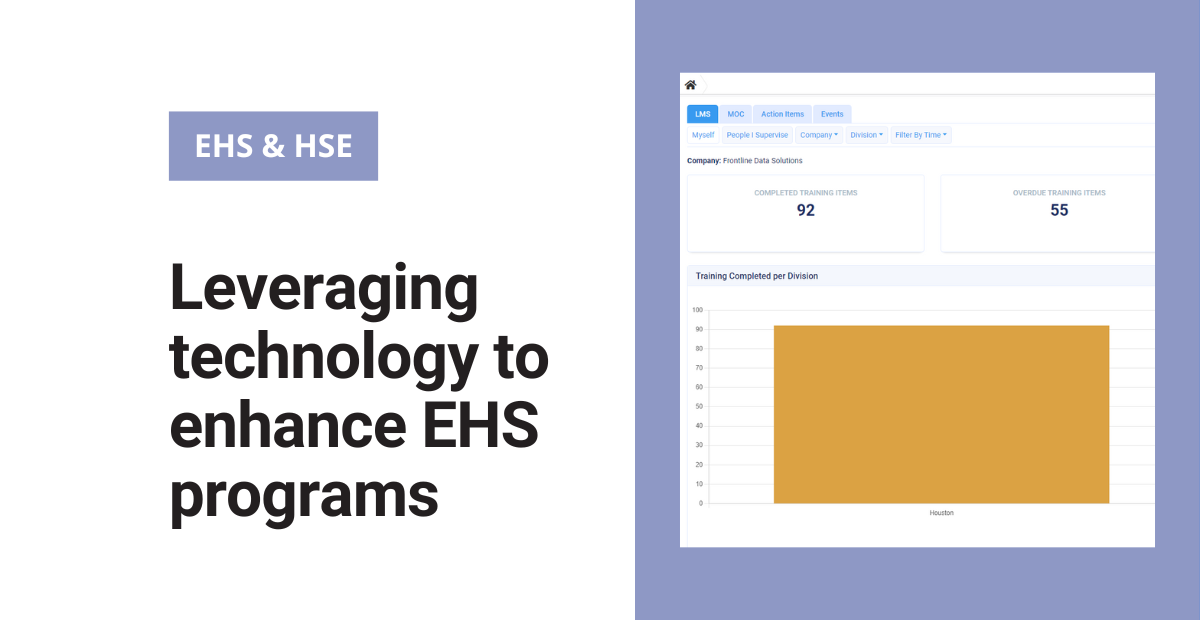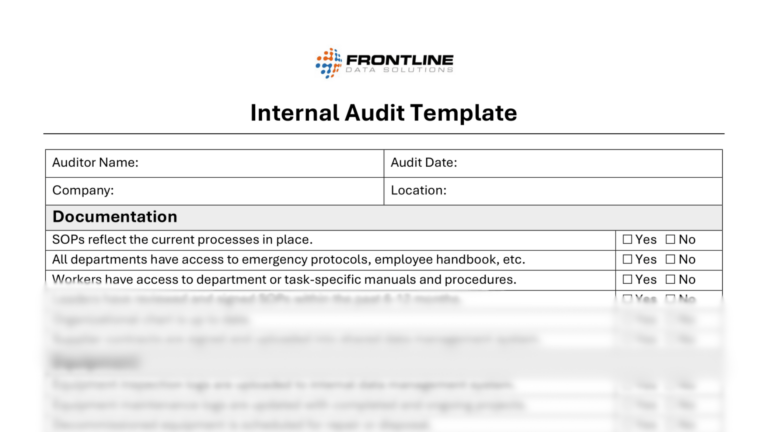As an experienced EHS professional, I’ve seen firsthand the positive impact that technology can have on EHS programs. Technology has the potential to enhance EHS performance by increasing efficiency, reducing risk, and improving data accuracy.
And there’s a lot of room for creativity when it comes to leveraging EHS technology for different areas of the business. Not only can it help you improve safety performance, but it can also positively impact human resources, operations, quality, and much more.
Free template!
This Word template provides an outline that you can use to create a comprehenesive internal audit document.
The importance of technology in EHS
In today’s fast-paced world, technology serves as an essential tool for EHS professionals. Moreover, with advances in technology, you now have access to a wide range of tools that can help you:
- Train employees
- Oversee changes to processes, personnel, or equipment
- Perform administrative tasks related to onboarding
- Document incident reports, inspections, and more
- Track a variety of projects
- Verify third-party employees
These tools include EHS software applications, mobile devices, wearables, drones, and more. Moreover, investing in these resources helps you make more informed decisions and take proactive steps to prevent accidents and injuries. In addition, using these tools makes communication with employees, stakeholders, and regulatory agencies more effective.
Finding EHS technology solutions
First, the key step in leveraging technology to enhance EHS programs is to identify the most critical areas of improvement. Next, evaluate your current program and look for processes that are inefficient or the cause of recurring issues. Finally, use this evaluation to decide where technology can deliver the greatest impact.
Some common examples include:
- Document management
- Onboarding and offboarding
- Training
- Safety inspections, audits, and assessments
- Organization change management
The next step is to research potential solutions for the top areas you want to tackle. Here are a few questions you should try to answer when comparing different solutions:
- What are the primary features you’re looking for? Don’t get distracted by useless extras.
- How affordable is the solution? Make sure your budget is realistic for the technology.
- Is the solution easy to use? Look for a simple, user friendly system.
- Is the EHS technology scalable? Take the time now to pick a solution for the long-haul.
Training and support
To start, implementing EHS technology requires training and support for employees. Therefore, you should provide adequate training to employees on how to use the technology effectively. In particular, training should cover everything from basic system navigation to data input and analysis.
In addition, ongoing support is essential. For example, you can provide user manuals, online help resources, or access to a helpdesk. Moreover, it is important to have a dedicated team to address any technical issues that may arise when onboarding new workers to the system.
Finally, based on my experience, conducting regular meetings with employees helps facilitate the onboarding process. As a result, workers become more familiar and comfortable with new technologies, which is a critical factor for successful EHS technology implementation.
Benefits of using technology in EHS programs
There are several benefits of leveraging technology in EHS programs. One of the most significant benefits is increased efficiency. Technology can automate many of the repetitive tasks that are typically involved in EHS management. This automation can free up time for you to focus on more strategic tasks, such as risk assessments and hazard identification.
Another benefit of leveraging EHS technology is improved accuracy. By using technology to collect and analyze data, you help ensure that data is accurate and up-to-date. Greater accuracy allows you to make more informed decisions. And the downstream effect is that you adopt a proactive approach to safety.
Technology may also reduce the total risk exposure within a company. Monitoring compliance and identifying potential hazards with EHS software, for example, makes it easier to mitigate risk. This means you can prevent accidents and injuries, thereby reducing liability.
Finally, technology can help your team improve communication. Whether that’s between each other, frontline workers, senior leaders, or regulatory agencies, you can ensure that everyone is on the same page. This improved communication can help to prevent misunderstandings and ultimately improve compliance.
Investing in environment, health and safety technology
EHS technology has become an essential investment for companies looking to improve their processes. Therefore, these tools allow you to:
- Increase efficiency
- Reduce risk
- Ensure data accuracy
- Improve communication
To begin with, implementing these solutions requires careful planning, evaluation, and training. Next, the process involves identifying areas of improvement and researching available solutions. Finally, you must train workers on how to use them effectively.





